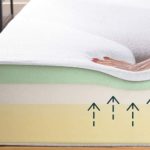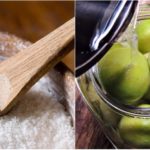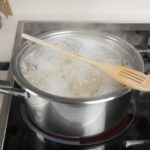There are numerous ways to protect yourself and those around you from the spread of diseases, such as wearing masks, washing your hands, and using hand sanitizer. Today, we will share four additional methods to create your own face shield for extra protection.
Read on to discover how you can make your own face shield at home using simple materials and easy-to-follow steps. Let’s get started!
1. Face Shield Made from Clear Plastic Sheet and Foam
Materials Needed
- 1 A4-sized clear plastic sheet
- 1 long piece of foam
- Double-sided tape
- Stickers
Instructions
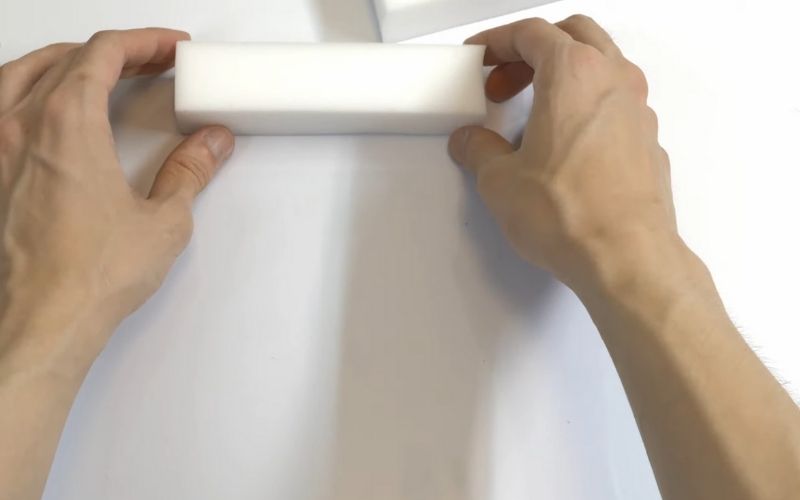
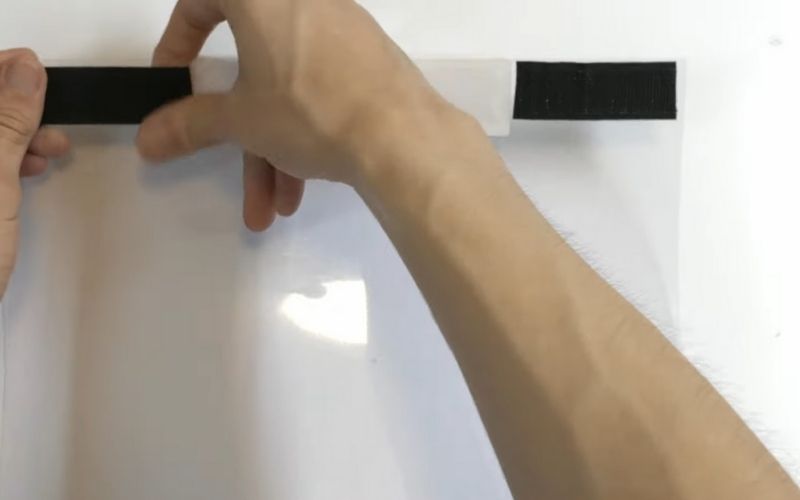

And there you have it! A simple yet effective face shield for added protection.
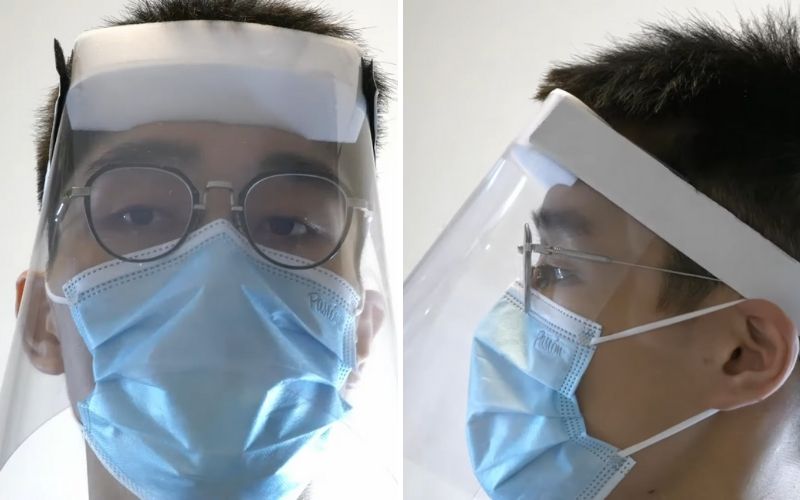 The face shield with foam provides comfortable and effective protection without causing head pain.
The face shield with foam provides comfortable and effective protection without causing head pain.
2 Face Shield Made from Flexible File Folder
Materials Needed
- 1 flexible file folder
- Scissors
- Elastic band
Instructions
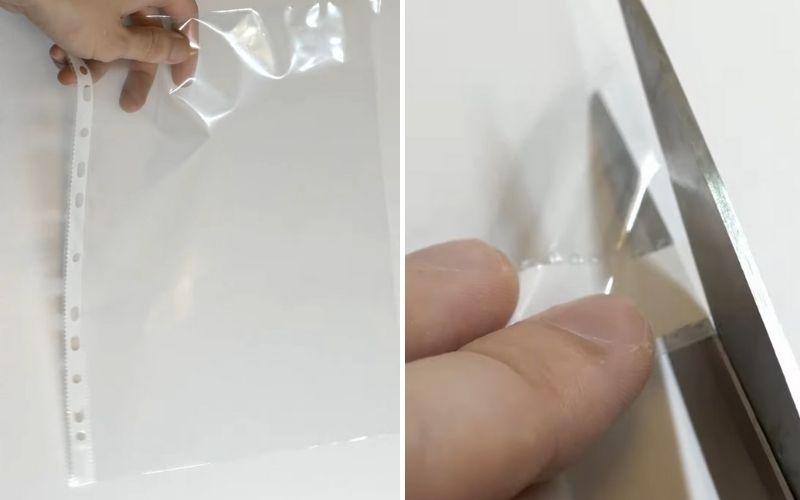
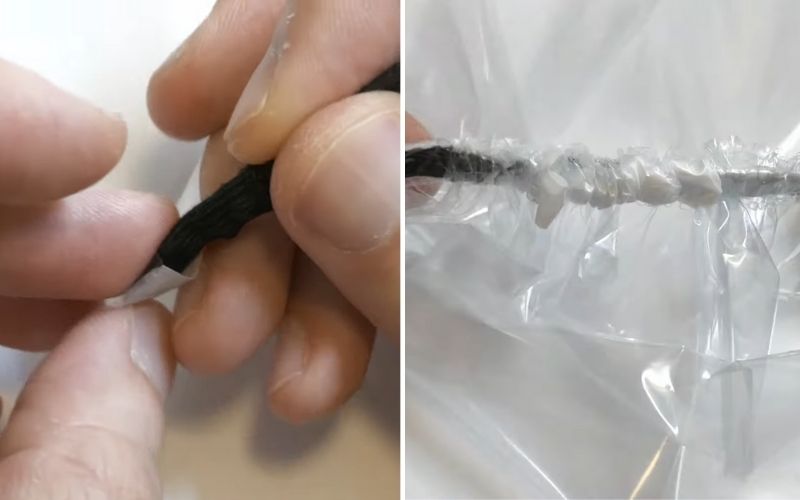
The final product is a face shield that effectively blocks droplets!
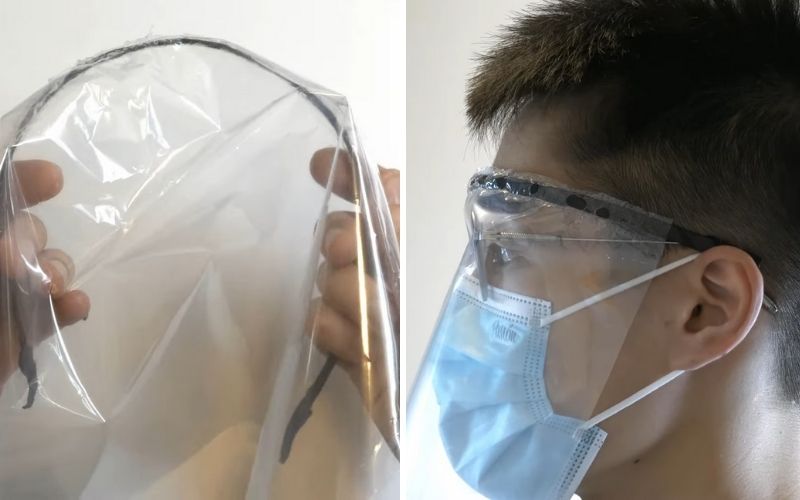 The DIY face shield helps prevent droplets from entering your face.
The DIY face shield helps prevent droplets from entering your face.
3 Face Shield Made from Clear Plastic Sheet and Face Mask
Materials Needed
- 1 face mask
- 1 A4-sized clear plastic sheet
- Glue gun
- Scissors
Instructions
Use scissors to trim the bottom edge of the plastic sheet into a curved shape. Then, use the glue gun to apply glue to the top edge of the face mask and attach it to the plastic sheet, as shown in the image below:
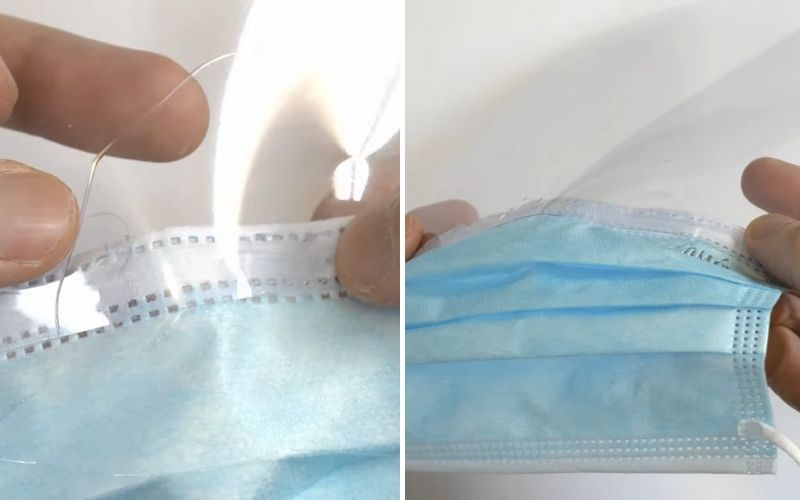
With this setup, you can wear a face mask and have additional protection for your head.
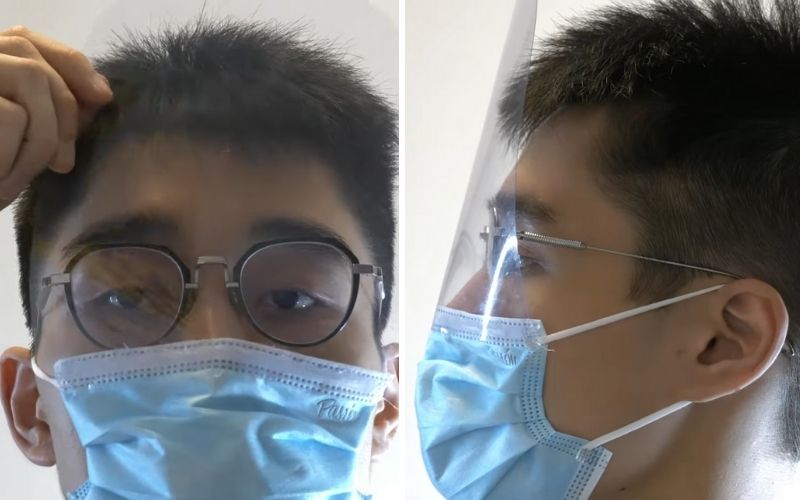 This combination provides both face mask protection and head coverage.
This combination provides both face mask protection and head coverage.
4 Face Shield Made from Clear Plastic Sheet and Baseball Cap
Materials Needed
- 1 A4-sized clear plastic sheet
- 1 baseball cap
- Stickers
- Scissors
- Glue gun
Instructions
Cut two pieces of stickers and use the glue gun to attach one side of each sticker to the sides of the baseball cap. Stick the remaining side of the stickers to the clear plastic sheet. Finally, secure the plastic sheet to the cap using the stickers.
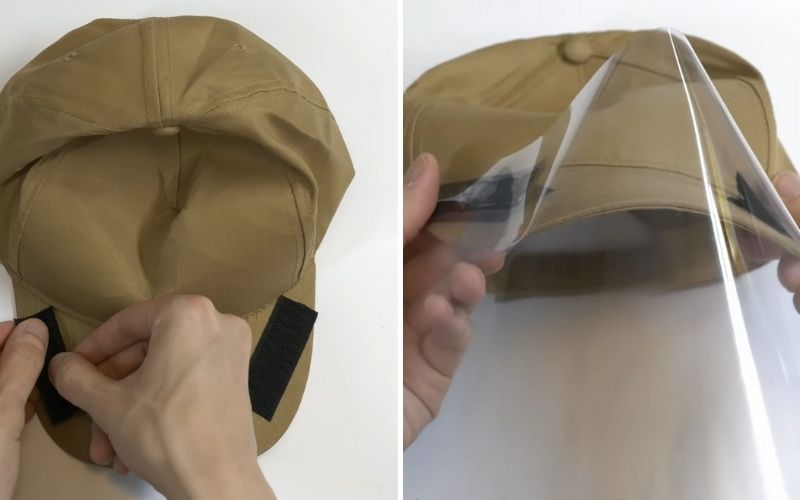
The clear plastic sheet attached to the baseball cap provides sun protection and also helps to block droplets.
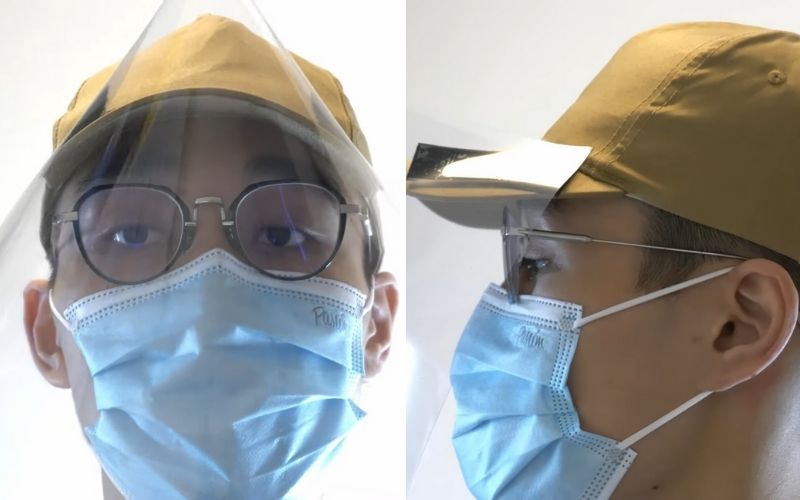 The face shield made from a clear plastic sheet and a baseball cap offers comprehensive protection.
The face shield made from a clear plastic sheet and a baseball cap offers comprehensive protection.
We hope that these DIY face shield tips will help you and your loved ones stay safe and protected when going out during this challenging time.
Foam Mattress’>Find Out Who Will Benefit Most from a Foam Mattress
Creating High-Quality Salted Lemon Jars
Soothing, refreshing, and surprisingly healthy, a jar of salted lemonade is the perfect beverage for hot weather. Preparing the perfect jar of salted lemonade doesn’t take much time – simply soaking the lemons in a saturated salt water solution, followed by sun-drying the jar, is all that’s required. But beware – never sun-dry the lemon before salting it!

























